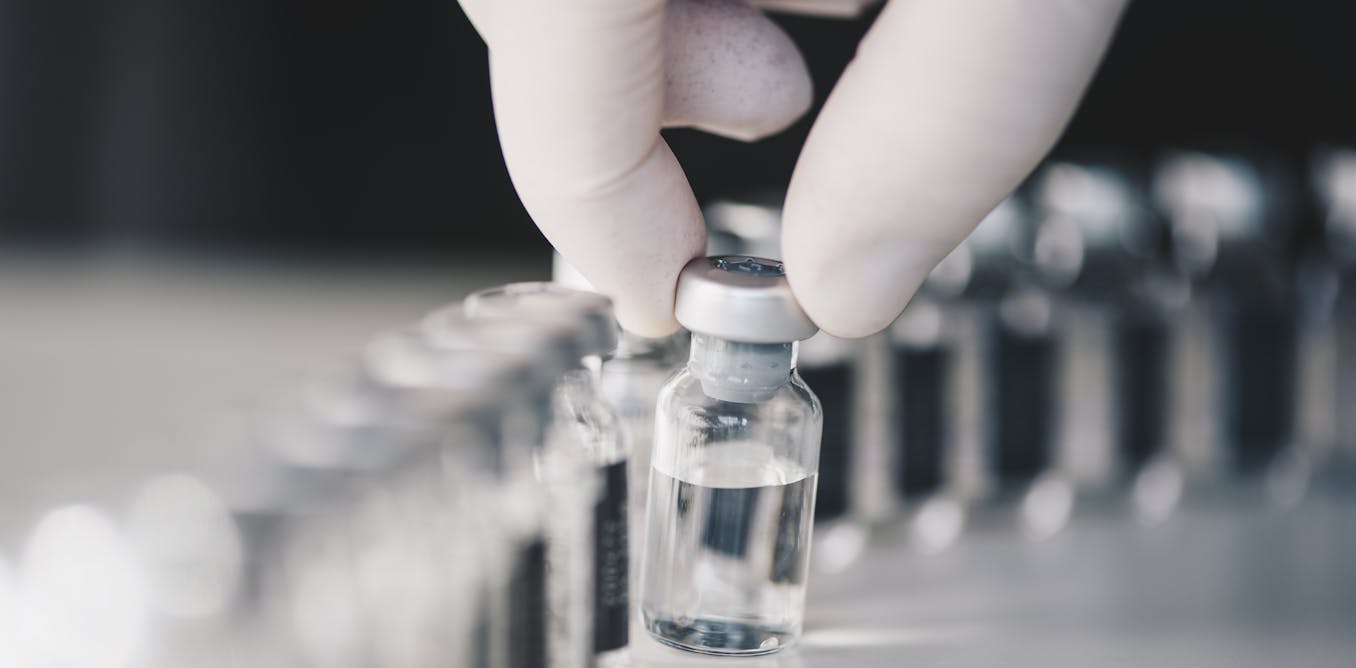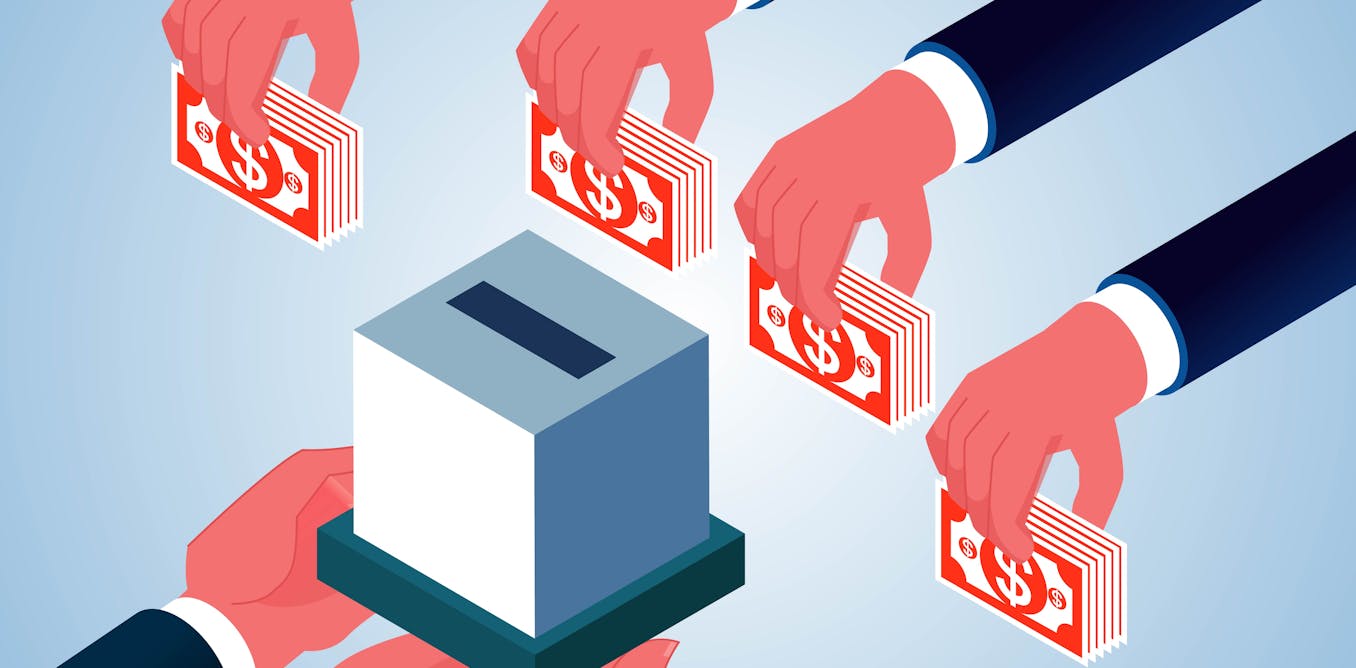Large cuts to government-funded research and development can endanger American innovation – and the vital productivity gains it supports.
The Trump administration has already canceled at least US$1.8 billion in research grants previously awarded by the National Institutes of Health, which supports biomedical and health research. Its preliminary budget request for the 2026 fiscal year proposed slashing federal funding for scientific and health research, cutting the NIH budget by another $18 billion – nearly a 40% reduction. The National Science Foundation, which funds much of the basic scientific research conducted at universities, would see its budget slashed by $5 billion – cutting it by more than half.
Research and development spending might strike you as an unnecessary expense for the government. Perhaps you see it as something universities or private companies should instead be paying for themselves. But as research I’ve conducted shows, if the government were to abandon its long-standing practice of investing in R&D, it would significantly slow the pace of U.S. innovation and economic growth.
I’m an economist at Texas A&M University. For the past five years, I’ve been studying the long-term economic benefits of government-funded R&D with Karel Mertens, an economist at the Federal Reserve Bank of Dallas. We have found that government R&D spending on everything from the Apollo space program to the Human Genome Project has fueled innovation. We also found that federal R&D spending has played a significant role in boosting U.S. productivity and spurring economic growth over the past 75 years.
Measuring productivity
Productivity rises when economic growth is caused by technological progress and know-how, rather than workers putting in more hours or employers using more equipment and machinery. Economists believe that higher productivity fuels economic growth and raises living standards over the long run.
U.S. productivity growth fell by half, from an average of roughly 2% a year in the 1950s and 1960s to about 1%, starting in the early 1970s. This deceleration eerily coincides with a big decline in government R&D spending, which peaked at over 1.8% of gross domestic product in the mid-1960s. Government R&D spending has declined since then and has fallen by half – to below 0.9% of GDP – today.
Government R&D spending encompasses all innovative work the government directly pays for, regardless of who does it. Private companies and universities conduct a lot of this work, as do national labs and federal agencies, like the NIH.
Correlation is not causation. But in a Dallas Fed working paper released in November 2024, my co-author and I identified a strong causal link between government R&D spending and U.S. productivity growth. We estimated that government R&D spending consistently accounted for more than 20% of all U.S. productivity growth since World War II. And a decline in that spending after the 1960s can account for nearly one-fourth of the deceleration in productivity since then.
These significant productivity gains came from R&D investments by federal agencies that are not focused on national defense. Examples include the NIH’s support for biomedical research, the Department of Energy’s funding for physics and energy research, and NASA’s spending on aeronautics and space exploration technologies.
Not all productivity growth is driven by government R&D. Economists think public investment in physical infrastructure, such as construction of the interstate highway system starting in the Eisenhower administration, also spurred productivity growth. And U.S. productivity growth briefly accelerated during the information technology boom of the late 1990s and early 2000s, which we do not attribute to government R&D investment.
More R than D
We have found that government R&D investment is more effective than private R&D spending at driving productivity, likely because the private sector tends to spend much more on the development side of R&D, while the public sector tends to emphasize research.
Economists believe the private sector will naturally underinvest in more fundamental research because it is harder to patent and profit from this work. We think our higher estimated returns on nondefense R&D reflect greater productivity benefits from fundamental research, which generates more widely shared knowledge, than from private sector spending on development.
Like the private sector, the Department of Defense spends much more on development – of weapons and military technology – than on fundamental research. We found only inconclusive evidence on the returns on military R&D.
R&D work funded by the Defense Department also tends to initially be classified and kept secret from geopolitical rivals, such as the Manhattan Project that developed the atomic bomb. As a result, gains for the whole economy from that source of innovation could take longer to materialize than the 15-year time frame we have studied.
Nitat Termmee/Moment via Getty Images
Role of Congress
The high returns on nondefense R&D that we estimated suggest that Congress has historically underinvested in these areas. For instance, the productivity gains from nondefense R&D are at least 10 times higher than those from government investments in highways, bridges and other kinds of physical infrastructure. The government has also invested far more in physical infrastructure than R&D over the past 75 years. Increasing R&D investment would take advantage of these higher returns and gradually reduce them because of diminishing marginal returns to additional investment.
So why is the government not spending substantially more on R&D?
One argument sometimes heard against federal R&D spending is that it displaces, or “crowds out,” R&D spending the private sector would otherwise undertake. For instance, the administration’s budget request proposed reducing or eliminating NASA space technology programs it deemed “better suited to private sector research and development.”
But my colleague and I have found that government spending on R&D complements private investment. An additional dollar of government nondefense R&D spending causes the private sector to increase its R&D spending by an additional 20 cents. So we expect budget cuts to the NIH, NSF and NASA to actually reduce R&D spending by companies, which is also bad for economic growth.
Federal R&D spending is also often on the chopping block whenever Congress focuses on deficit reduction. In part, that likely reflects the gradual nature of the economic benefits from government-funded R&D, which are at odds with the country’s four-year electoral cycles.
Similarly, the benefits from NIH spending on biomedical research are usually less visible than government spending on Medicare or Medicaid, which are health insurance programs for those 65 years and older and those with low incomes or disabilities. But Medicare or Medicaid help Americans buy prescription drugs and medical devices that were invented with the help of NIH-funded research.
Even if the benefits of government R&D are slow to materialize or are harder to see than those from other government programs, our research suggests that the U.S. economy will be less innovative and productive – and Americans will be worse off for it – if Congress agrees to deep cuts to science and research funding.
The views expressed in the Dallas Fed working paper are the views of the authors only and do not necessarily reflect the views of the Federal Reserve Bank of Dallas or the Federal Reserve System.

The post “Federal R&D funding boosts productivity for the whole economy − making big cuts to such government spending unwise” by Andrew Fieldhouse, Visiting Assistant Professor of Finance, Texas A&M University was published on 06/12/2025 by theconversation.com






































Leave a Reply